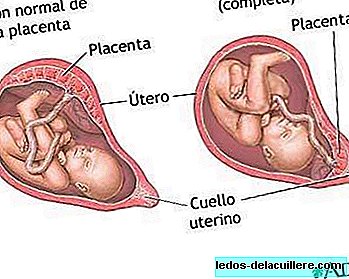
After having carefully seen what the placenta is, what it is for and what it is made of, we will explain when it is said that a placenta is aged or there is an old placenta or hypermature Remember that the placenta is an organ that forms inside the uterus during pregnancy and helps to nourish the baby and filter the excess waste generated during the three trimesters.
But the placenta does not have an unlimited life in its functions but it is evolving, maturing, and could get to “grow old”. The duration of the placenta in its full functions does not normally end before the birth occurs.
However, on some occasions when the expected date of delivery is exceeded or due to certain anomalies, there may be a risk that there is an old placenta, that this organ has aged and cannot fully fulfill its functions.
When the life of the placenta culminates its functioning is affected and calcifications are formed, which can sometimes be seen on an ultrasound. But these do not always mean that it is not working well or that it does not nourish the baby, since the placenta can continue to fulfill its function even though these calcifications are noticed.
Anyway, that a placenta ages is normal and it happens to all women who carry a non-premature pregnancy. There are different degrees of aging and, given the risk that the placenta is no longer fulfilling its functions, the delivery is delayed and the baby does not feed as expected, doctors may consider inducing labor.
There are some factors that could cause the placenta to age before, such as maternal hypertension, kidney, vascular diseases or antiphospholipid syndrome, a disease that affects the immune system and causes the maternal organism to create antibodies that attack the placenta.
It is important that we have adequate prenatal control to monitor the development of the baby, especially at the end of pregnancy. Thus, if it is suspected that there is an old placenta, they could recommend rest or some medications that increase the flow of uterine-placental blood and others that favor fetal development, or finally the convenience of inducing labor could be seen if it is considered that There is risk for the baby.
In summary, the aged, old or hypermadura placenta It occurs when their functions of nourishing and protecting the baby are diminished because their life is lengthened by delaying the expected date of delivery or because there is some maternal abnormality that affects its proper functioning.












